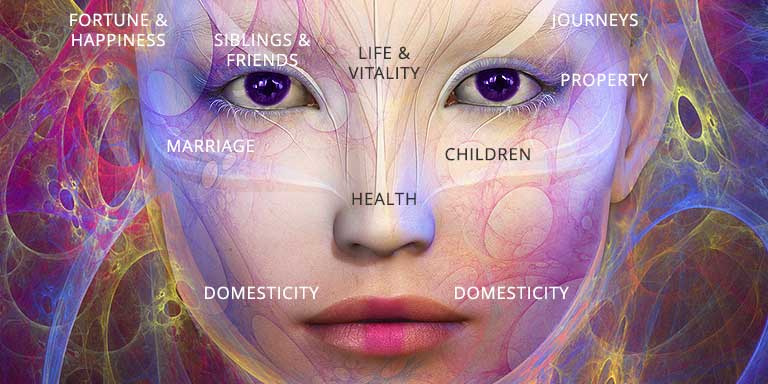You may be wondering what is non-verbal communication? This skill is essential and can be used in many situations. Children, for example, use non-verbal communication from the moment they are born. They rely on non-verbal communication because they can’t speak or use language. Crying is a typical example of this type of communication, and it is a sign that something is wrong.
Linguistic and non-linguistic communication
 It is well-established that linguistic and non-linguistic communication have different cognitive and neural processes. While language has rules that determine the correct articulation and meaning of a sentence, non-linguistic communication does not. It uses signs with different meanings. This means that non-linguistic communication is a more general term, capturing several meanings of the word meaning. Understanding the difference between them is therefore crucial.
It is well-established that linguistic and non-linguistic communication have different cognitive and neural processes. While language has rules that determine the correct articulation and meaning of a sentence, non-linguistic communication does not. It uses signs with different meanings. This means that non-linguistic communication is a more general term, capturing several meanings of the word meaning. Understanding the difference between them is therefore crucial.
The difference between linguistic and non-linguistic communication can be noticeable when interpreting signs. the signs that are not linguistically communicated, also known as non-language, can be seen by many senses, such as sound, sight and touch. Signs are analysed using the scientific discipline of semiotics. Then the signs in traffic systems illustrate non-linguistic communication. Signs in traffic are designated by the car driving the vehicle, while the driver is the one behind the flag. The interpreter is on the opposite side.
A cognitive process that enables language processing to be performed is crucial for the use of language. But linguistics and other communication are very closely linked. Many mental processes are involved in non-linguistic touch, which does not require language. Mirror neurons, for example, are thought to play a role in language processing. They were discovered in the prefrontal cortex of rhesus macaques and are fired when the monkeys perform actions. These neurons help study non-linguistic communication.
Studying facial cues in communication
 Human face has long been the focus of research in non-verbal communication. Psychologists have created sophisticated techniques to code facial expressions. Humans can express many emotions using facial muscles. Numerous studies show that facial expressions can convey a variety of emotions, including sadness and happiness. Here, we will explore how facial expressions influence our emotions. Below are some of the most important facial expressions and their corresponding emotions.
Human face has long been the focus of research in non-verbal communication. Psychologists have created sophisticated techniques to code facial expressions. Humans can express many emotions using facial muscles. Numerous studies show that facial expressions can convey a variety of emotions, including sadness and happiness. Here, we will explore how facial expressions influence our emotions. Below are some of the most important facial expressions and their corresponding emotions.
Facial expressions are the most direct and immediate cues humans use to communicate. Here, we discuss how facial expressions influence interpersonal communication. A significant part of facial communication involves eye contact. This trait may have evolved in early childhood, and humans are one of the only mammals that maintain regular eye contact with their mothers while nursing. The use of eye contact can be used to control a conversation and show interest. It also helps establish a relationship with others.
One study, conducted by Righart and de Gelder, incorporated two kinds of stimulus into their experimental paradigm. Participants were presented with a face and a scene simultaneously. The faces were introduced in the centre of a screen. The screen was then used to display the faces. Participants were required to classify the expressions using the scenes that they experienced. They did not undergo the same emotion when the faces and scenes were dissimilar.
Body language and communication
Social workers will likely observe subtle signals in people’s moods and emotions. These signs can be a sign of stress, anxiety, anger, and insecurity. Other non-verbal cues may indicate fear or boredom. Your non-verbal communication can reflect your mood, whether you are a businessperson. Here are some examples. The first time you meet someone new, make an effort to observe how they hold their body.
A person’s body language can dramatically influence what they say or feel. If a person taps their feet or crosses their arms, they communicate their displeasure. The most effective way to communicate with someone is to maintain an open stance and consider the other person’s point of view. Learning to read their non-verbal cues early in life is vital for personal growth, confidence, and career success.
Then a person’s mood can be expressed through body movements and facial expressions. Research has shown that body language is inherited, but it is more likely learned than taught. Breathing, shoulders, and chest movement can also convey a person’s mood. The same is true for attitude. Whether you’re happy or sad, your non-verbal communication can help you convey the message you want to convey.
How to better read others in negotiation
Even though you are on the same side with your partner during negotiations, how do you interpret your partner’s body language? Understanding how body language can communicate various emotions is the first step. Positive body language is a sign of agreement. Negative body language can indicate disinterest and disagreement. Your partner will likely be able to nod or look toward you when you are having a conversation.
Successful negotiators strive to get to know their counterparts and meet their needs. They seek to understand the other side’s perspective to maximize their chances of reaching an agreement that benefits both parties. These are other ways to help you understand others when you negotiate. Once you understand the other party’s perspective, you can effectively approach negotiation from that perspective.
You can only improve by practising, so make sure to read books about negotiation. Some people are naturally gifted at negotiating. Others need to be taught the skills that can help them win. Negotiation books can teach you to read others better, empathize with the other party, and present your case persuasively. These books also teach you how to maintain relationships while achieving a compromise. The books offer tips and observations that can be used to build skills and examples from real-world situations.
Facial tells to detect lying
When it comes to non-verbal communication, there are several ways to tell if someone is lying. These behaviours are linked to various emotions, intentions, and situations. Since the person controls them, they can also be used to identify deception. Researchers are still examining these behaviours to discover the best ways to spot a potential lie. Observers can use these signs to detect deception in people and help them identify lies.
One of the best ways to identify a lie is watching their eye movements. Eye movements toward the mouth and forehead are common indicators of lies. A liar may look up more or to the right more than an honest person would. When they lie, their eyes can shift in any direction. These signs may be false or true, depending on who they are. For instance, a person lying may move their gaze away from their mouth while they are smirking or laughing.
Other than eye movements, deception can also be detected by nonverbal cues. The most common facial tells of seeing lying in non-verbally communicated communications are saccadic eye movements and contraction of the eye muscles. This characteristic is consistent with “Duping Delight”, a combination of saccadic eye movements and contractions of the eye muscles. In addition to facial muscles, people may also contract their eyelids to recall information.
Summing up non-verbal communication
Non-verbal communication can be a potent tool in our daily interactions with others. Our body language often communicates more than our words. A smile or a tense jaw can convey more about our emotions than we can ever share with terms. Your nonverbal communication can influence your daily success or failure. Luckily, there are some ways to recognize when we’re saying the wrong thing, and what we don’t say can be as important as what we say.
We don’t always need to communicate our thoughts verbally when using nonverbal communication. Many people do this automatically, and the way they do it can vary based on the situation. Non-verbal communication is often unconsciously reinforced, as we don’t necessarily express our true feelings. Even if it isn’t intended, our body language can communicate a range of messages about our intentions.
The importance of non-verbal communication is undeniable. It can help us meet our needs, better understand others and form stronger connections with others. Although some people may seem to have a natural gift for it, everyone can improve their non-verbal communication skills. You’d be amazed at how much it makes a difference in the way you interact with others, no matter what your nonverbal communication abilities may seem.
About Dadhichi Toth, the Author

Dadhichi Toth is a revisionary astrologer who works with both Eastern and Western systems of astrology.
He is the founder and CEO of astrology.com.au and previous author of the best-selling astrology series of books for Harlequin Mills and Boon for 9 years.
📧 He can be contacted on [email protected]
🌌 For a personal consultation book here














